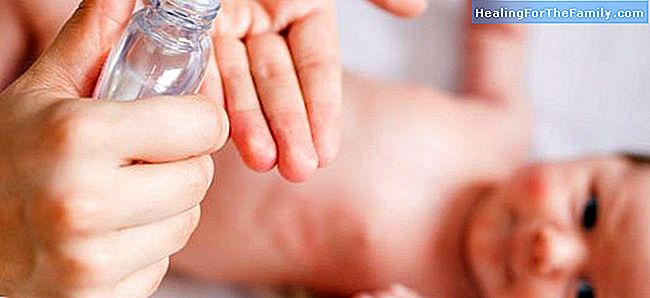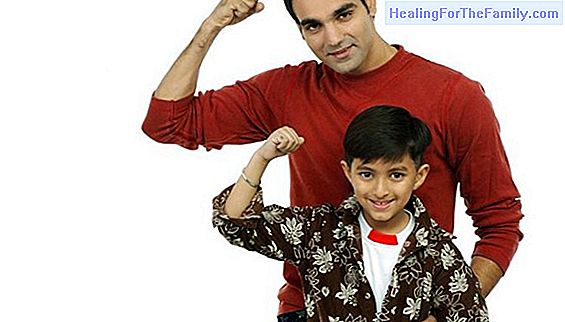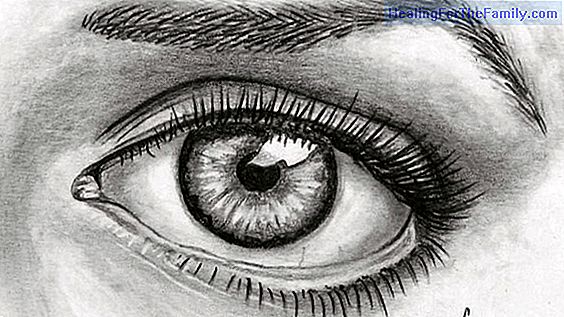Massage for babies with Down Syndrome
The benefits of massage is indisputable nowadays, in addition, the massage between parents and babies turns the benefits into something mutual for both parties, benefits both the person who receives it and the one that provides it. At birth a bond is created that increases as parents share time and
The benefits of massage is indisputable nowadays, in addition, the massage between parents and babies turns the benefits into something mutual for both parties, benefits both the person who receives it and the one that provides it.
At birth a bond is created that increases as parents share time and experiences with their babies. Creating a space, an environment and an attitude fosters 'contact', something so important for the creation of the affective bond. The relationship between parents-children will therefore be benefited by the 'attachment' and 'affection'.
Benefits of massage for children with Down Syndrome

Assimilating the birth of a child with Down syndrome or any other capacity is often not easy, especially when the diagnosis is unexpected. The first days, or even months, are the hardest for their parents, with the guilt and rejection phase appearing many times.
- Teach parents certain sensory massage techniques and raise awareness to apply them periodically, it will help strengthen their relationship and help them to bond with their baby from the first day through caresses and communication, both verbal and non-verbal. This, without a doubt, is a good start to reestablish the affective bond with our little one.
- The massage and the context in which it is performed will produce a multisensory stimulation in the baby. The technique of applied massage, light, temperature, music, posture, materials used, voice, touch, as well as the expression of parents are factors that stimulate relaxation, motility or sensitivity of the baby.
How to give a massage to a baby with Down syndrome
The benefits that a baby with Down syndrome obtiene obtains are exactly the same as another baby without the syndrome, therefore, if our baby has constipation the applied massage will be applied in the abdominal area to facilitate bowel movements, but also, in the case of these babies, when applying the techniques of Infant Massage we must take into account the following: Comen 1. We will begin with energetic but gentle movements from the distal to the proximal area of the members with a constant or alternating frequency, ending with a very smooth drainage in the limbs. With this we will stimulate the circulation and the spontaneous mobility of the baby, in addition to the muscular tone. Babies with Down syndrome tend to have lower-than-normal muscle tone at birth (hypotonia), flaccidity, and tend to have excessive flexibility of the joints. Real 2. We will stretch the facial musculature. We will stretch the forehead, massage the external chewing muscles and the orbicular muscles of the lips. With this we will be able to stimulate gesticulation, body awareness and facial muscle tone. Como 3. As a preventive and treatment measure in the initial phases, we will perform 'soft clapping' (percussion with hollow palms in the ascending direction) and vibration to avoid the accumulation of mucus in babies. This technique helps the baby to expel the secretions. In babies with Down syndrome, due to its generalized hypotonia, the intensity of the cough is diminished since the muscles involved in breathing and cough are also hypotonic. 4. In babies with hypotonia it is very useful to perform the abdominal technique in a preventive way facilitating intestinal motility and bowel movements, in addition to the accumulation of gases. We have to gently feel the abdomen of the baby to look for gases (which usually accumulate in the left area) and then perform abdominal massage.
5. We will apply the orofacial technique, encouraging the mobility of the tongue, the beginning of chewing and swallowing. To do this, intra-oral stimulation will be performed with gentle pressures on the gums and perioral stimulation of the primary reflexes. This technique aims to achieve constant and constructive general mobility, decrease discomfort from teething and stimulate chewing movements early.
It is important that the massage is carried out by the father or the mother of the baby
to strengthen the affective emotional bond between the parents and the baby
. We will never do it forcibly, neither for the baby nor for their parents, since the benefits derived from the massage would not be achieved. If the baby has fever or bronchitis it is better to wait to perform these techniques, and if the baby is in full digestion we will also wait for you. And finally, remember that it is important to consult your pediatrician before beginning infant massage to avoid damaging or negatively stimulating the baby.












